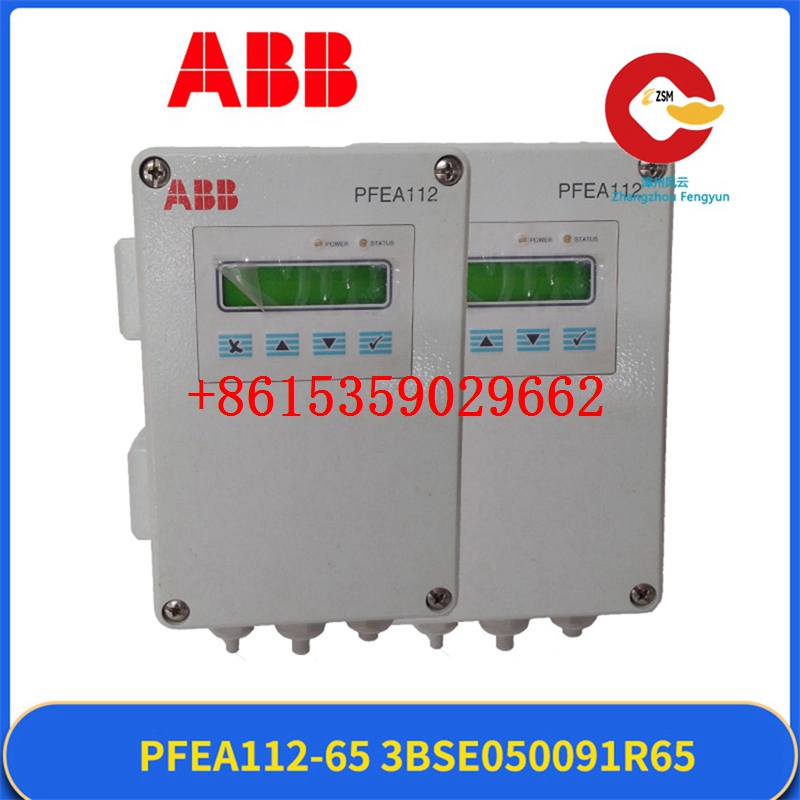Technical Parameters of ABB PM633 3BSE008062R1 CPU Module

1. General Overview
The ABB PM633 3BSE008062R1 CPU module is a crucial component within ABB’s automation and control systems. It serves as the central processing unit, responsible for executing control algorithms, managing data communication, and coordinating the operation of various connected devices in industrial environments. This module is designed to meet the stringent requirements of modern industrial automation, offering high reliability, performance, and flexibility.
2. Hardware Specifications
2.1 Processor
- Type: Equipped with a high – performance, multi – core processor. The exact architecture and core count may vary depending on the specific revision of the module, but it is optimized for real – time control applications. For example, it can handle complex control tasks such as PID loops, sequence control, and data processing with minimal latency.
- Clock Speed: Operates at a high clock speed, typically in the range of several hundred megahertz to over a gigahertz. This ensures rapid execution of control programs and quick response to process changes, enabling efficient and accurate control of industrial processes.
2.2 Memory
- RAM: Features a generous amount of RAM, usually measured in gigabytes. This large memory capacity allows the CPU module to store and process large amounts of data, including control programs, historical data, and real – time process information. For instance, it can handle complex control algorithms that require extensive data manipulation and storage.
- Flash Memory: Includes built – in flash memory for non – volatile storage of the operating system, control applications, and configuration data. The flash memory ensures that the module retains its settings and programs even in the event of a power failure, providing a reliable and stable operating environment.
2.3 Communication Interfaces
- Ethernet: Equipped with multiple Ethernet ports, typically supporting 10/100/1000 Mbps data transfer rates. These ports enable the CPU module to communicate with other devices in the automation system, such as operator stations, engineering stations, and other I/O modules, as well as with external systems via standard Ethernet protocols like TCP/IP, OPC UA, etc.
- Serial Communication: May include serial communication ports (e.g., RS – 232, RS – 485) for connecting to legacy devices or for special communication requirements. These ports provide flexibility in integrating with a wide variety of industrial equipment, allowing the CPU module to communicate with sensors, actuators, and other devices that use serial communication.
- Fieldbus Interfaces: Supports various fieldbus protocols, such as Profibus, Modbus, and DeviceNet. These fieldbus interfaces enable the CPU module to connect to and control a large number of I/O devices distributed throughout the industrial plant, providing a seamless and integrated control solution.
2.4 Power Supply
- Input Voltage Range: Accepts a wide input voltage range, typically from 85 – 264 V AC or 110 – 300 V DC. This makes it suitable for use in different power supply environments around the world and provides flexibility in system design.
- Power Consumption: Has relatively low power consumption, which helps to reduce operating costs and environmental impact. The exact power consumption depends on the configuration and load of the module, but it is designed to be energy – efficient.
3. Software Compatibility
- Operating System: Runs on a real – time operating system (RTOS) specifically designed for industrial control applications. This RTOS provides deterministic behavior, ensuring that control tasks are executed within strict time constraints, which is crucial for maintaining process stability and safety. For example, it guarantees that critical control loops are executed at the required intervals, regardless of other system activities.
- Control Software: Fully compatible with ABB’s control software suite, such as ABB’s 800xA automation system. This software provides a user – friendly interface for programming, configuring, and monitoring the CPU module and the entire automation system. It allows engineers to develop complex control strategies, create human – machine interfaces (HMIs), and perform system diagnostics and maintenance.
4. Performance and Reliability
- Processing Speed: The high – performance processor and optimized software architecture enable the CPU module to achieve fast processing speeds. It can execute a large number of control instructions per second, ensuring that the industrial process is controlled accurately and in real – time. For example, in a fast – moving manufacturing line, the CPU module can quickly adjust the speed and position of motors based on sensor feedback.
- Mean Time Between Failures (MTBF): Has a high MTBF, indicating a long – term reliable operation. This is achieved through the use of high – quality components, robust design, and thorough testing during the manufacturing process. A high MTBF reduces the need for frequent maintenance and downtime, increasing the overall productivity of the industrial plant.
- Redundancy Options: Supports redundancy configurations, such as redundant processors, power supplies, and communication links. Redundancy enhances system availability by providing backup components that can take over in the event of a failure, minimizing process downtime and ensuring continuous operation of critical industrial processes.
5. Environmental Specifications
- Operating Temperature Range: Can operate in a wide temperature range, typically from – 20°C to + 60°C (or – 4°F to + 140°F). This allows it to be installed in various industrial environments, including those with extreme temperature conditions, such as steel mills, chemical plants, and power generation facilities.
- Storage Temperature Range: Has a storage temperature range that is even wider, ensuring that the module can be stored safely without damage when not in use. The storage temperature range may extend from – 40°C to + 85°C (or – 40°F to + 185°F).
- Humidity: Designed to operate in environments with a relative humidity range of 5% to 95% (non – condensing), making it suitable for use in humid industrial settings.
- Vibration and Shock Resistance: Meets industrial standards for vibration and shock resistance, ensuring reliable operation even in environments with mechanical vibrations or occasional shocks, such as in manufacturing plants or near heavy machinery.
6. Mechanical Specifications
- Form Factor: Comes in a compact and rugged housing, which can be easily mounted on DIN rails or in control panels. The form factor is designed to save space and facilitate integration into existing industrial control systems.
- Mounting Options: Provides various mounting options, such as DIN rail mounting or panel mounting, to suit different installation requirements. The mounting hardware is typically included with the module, making the installation process straightforward.
In summary, the ABB PM633 3BSE008062R1 CPU module is a highly capable and reliable industrial automation component that combines advanced hardware features, software compatibility, and environmental robustness to meet the diverse needs of modern industrial automation applications.


